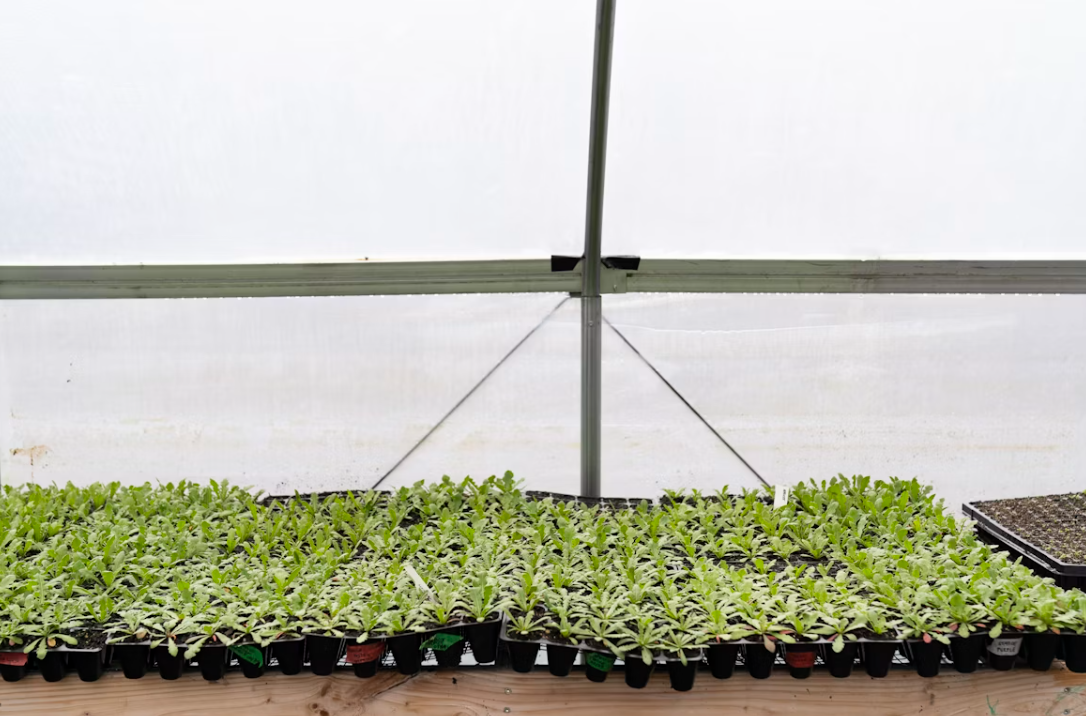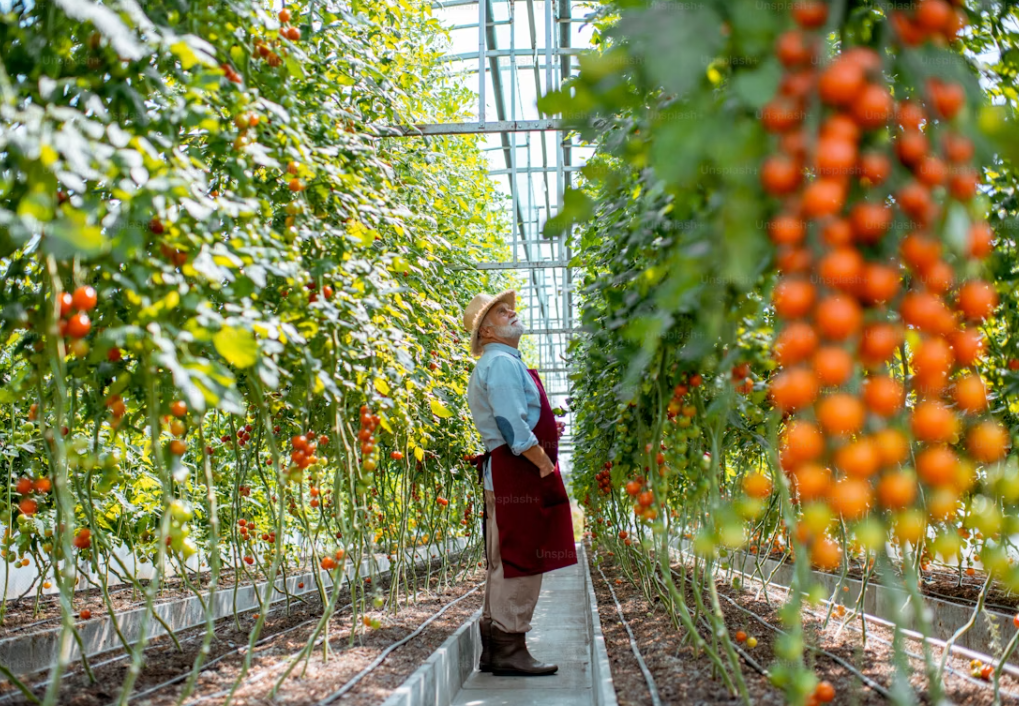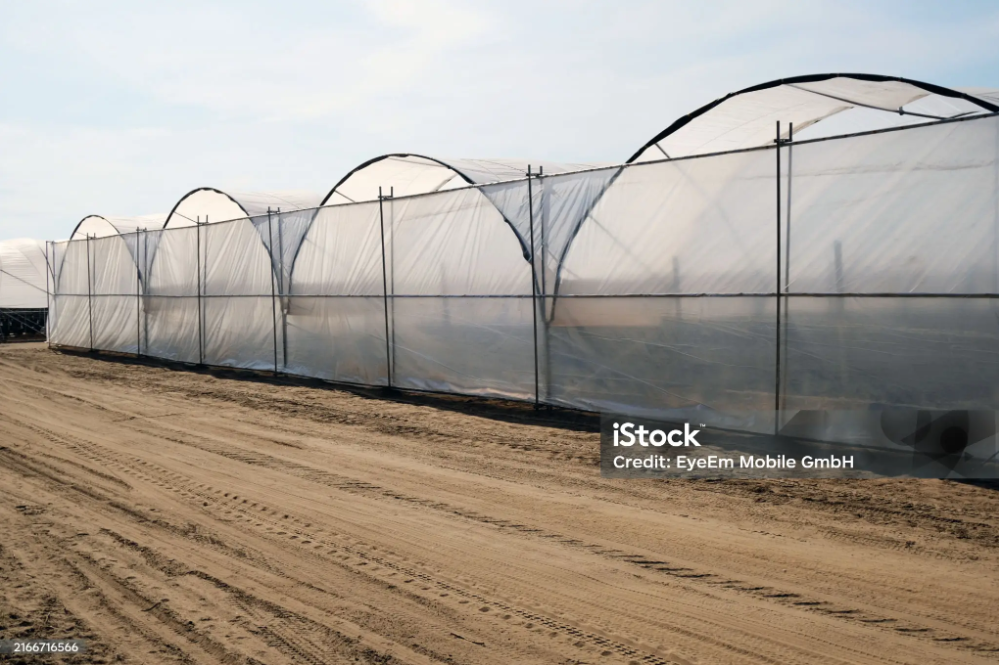Forget the "once-a-week" myth. If you’re searching for a fixed schedule to water greenhouse tomatoes, you’re setting yourself – and your plants – up for frustration. Overwatering is the #1 killer of greenhouse tomatoes, while underwatering cripples yields. The truth? The perfect watering frequency is dynamic, unique to your greenhouse, and changes daily.
At Kunyu Greenhouse, we help growers maximize tomato health and productivity. This guide cuts through the noise, revealing the science and practical steps to master greenhouse tomato irrigation.

Tomatoes are thirsty, but their needs shift constantly. Relying on a calendar is a recipe for root rot, blossom drop, split fruit, or stunted growth. Here’s what actually determines how often you should water:
1. Plant Growth Stage (The Biggest Factor!):
Seedlings/Transplants: Keep rooting medium consistently moist (not soggy). Water lightly but frequently. Goal: Tender root establishment.
Vegetative Growth (Pre-Flowering): Water deeply when the *top 1-2 inches* of soil/medium feel dry. Encourages deep root growth. Slight stress can be beneficial here.
Flowering & Fruit Set: Critical Phase! Maintain steady moisture. Fluctuations cause blossom drop and poor fruit set. Increase frequency/volume.
Fruit Swelling & Ripening: Peak Water Demand! Plants need abundant, consistent water for juicy, sizable fruit. Never let them wilt. Underwatering causes blossom end rot and small fruit.
Late Ripening/Harvest: Slightly reduce water (especially 1-2 days before picking) to boost sugars and flavor, and reduce cracking. Avoid severe drought.
2. Your Greenhouse Environment:
Temperature: Hotter = Faster evaporation & transpiration = Water more often. Summer vs. winter needs differ drastically.
Sunlight: Bright, long days dramatically increase water uptake. Cloudy periods? Reduce watering.
Humidity: High humidity slows plant water loss (transpiration) – water less frequently. Low humidity (common in heated greenhouses) speeds it up – water more.
Ventilation/Airflow: Good airflow reduces disease but increases transpiration slightly. Adjust accordingly.
3. Growing Medium & Containers:
Type: Lightweight potting mixes (coco coir, peat blends) drain fast and dry quickly – need frequent watering. Heavy soil holds water longer.
Drainage: Essential! Poor drainage = Root rot. Ensure pots/raised beds drain freely. Elevate containers if needed.
Pot Size: Small pots dry out much faster than large containers or in-ground beds.
4. Plant Size & Health: A large, leafy, fruit-laden plant drinks vastly more than a young seedling. Stressed or diseased plants may need less.
5. Your Irrigation System:
Drip Irrigation/Tape: The gold standard! Delivers water slowly, directly to roots. Enables frequent, short cycles without wetting leaves (prevents disease). Highly recommended for consistent moisture.
Soaker Hoses: Good root-zone delivery, similar benefits to drip.
Hand Watering/Overhead Sprinklers: Less efficient, wets foliage (increasing disease risk), harder to control volume and frequency. Water early morning if using overhead.

Forget the calendar. Learn to read your plants and soil:
1. The Finger Test (Simple & Reliable):
Cool and slightly damp? Wait. (Like a wrung-out sponge).
Dry or barely moist? Time to water!
Soggy or wet? Hold off! Check drainage.
Stick your finger 2-3 inches deep into the soil/medium near the plant base (not the edge).
What's it feel like?
Do this daily at first to learn your greenhouse's rhythm.
2. Observe Your Plants (Learn their language):
Early Thirst Signs: Slight wilting on the hottest part of a sunny day (plants often recover by evening). Slightly slower growth.
Moderate Water Stress: Wilting persists into cooler morning/evening hours. Leaves may look dull or slightly grey-green. Lower leaves curl or yellow. Flowers/small fruit drop.
Severe Water Stress: Pronounced, persistent wilting. Stunted growth. Dry, crispy leaves. Sunscald on fruit. Significantly reduced yield.
Overwatering Signs: Yellowing leaves (especially newer growth), overall droopiness without dry soil, soft/mushy stems near the base, foul smell from soil (root rot).
3. Lift the Pot (Container Trick): If growing in pots, lift them. A dry pot feels surprisingly light compared to a freshly watered one.
4. Use Tools (For Precision):
Soil Moisture Meter: Affordable probes give instant readings. Calibrate and use correctly.
Tensiometers: Professional tools measuring soil "suck" (how hard roots work). Ideal for serious growers.
Water Deeply & Thoroughly: When you water, do it until you see some runoff from containers/beds. This ensures water reaches the deeper roots. Avoid frequent shallow sprinklings.
Water in the Morning: BEST PRACTICE! Allows foliage to dry quickly, reducing fungal disease risk. Plants are hydrated before the heat of the day.
Avoid Evening Watering: Leaves stay wet overnight, inviting powdery mildew, blight, and other diseases.
Target the Roots: Use drip irrigation, soaker hoses, or water carefully at the base of plants. Keep leaves as dry as possible.
Consider Water Temperature: Ice-cold water can shock roots. Ideally, use water close to greenhouse air temp (store water in the greenhouse).
Mulch!: A layer of organic mulch (straw, wood chips) or reflective mulch over the soil surface significantly reduces evaporation, keeps roots cooler, and suppresses weeds. Reduces watering frequency.
Seedlings/New Transplants: Check daily. Water lightly every 1-2 days to keep medium consistently moist (not wet).
Established Veg Plants (Pre-Flower): Water deeply every 3-5 days, or when top 2 inches are dry. Goal: Encourage deep roots.
Flowering & Early Fruit Set: Water deeply every 2-4 days. Maintain consistent moisture. Monitor closely!
Peak Fruit Swelling: Water deeply every 1-3 days, possibly daily in hot weather or with small containers/dry media. Do not let plants wilt.
Ripening Fruit: Water deeply every 2-4 days. Slight reduction in volume/frequency towards harvest can enhance flavor.
Remember: These are starting points! Your finger test and plant observation are the ultimate guides.
Overwatering: The most frequent error! Leads to root rot (smelly, brown roots), yellow leaves, stunting, fungal diseases, blossom end rot (calcium transport blocked), and split fruit. Solution: Let soil dry significantly between waterings. Improve drainage. Check roots. Water based on need, not habit.
Underwatering: Causes wilting, blossom/fruit drop, stunted growth, small fruit, tough fruit, blossom end rot, and sunscald. Solution: Water more deeply and frequently, especially during heat/fruiting. Mulch heavily. Consider drip irrigation.
Inconsistent Watering: Fluctuations between dry and soggy stress plants, causing blossom drop, fruit cracking, and blossom end rot. Solution: Aim for steady moisture, especially during flowering/fruiting. Drip systems excel here.
Wetting Foliage: Promotes fungal and bacterial diseases. Solution: Water at the base only. Use drip irrigation. Water in the morning.

Mastering greenhouse tomato watering isn't about memorizing a schedule; it's about becoming an attentive grower. By understanding the factors at play – your plants' stage, the intense greenhouse environment, your specific setup – and learning to read the signs (finger test, plant cues), you unlock the key to:
Explosive growth & maximum yields
Plump, flavorful, crack-free fruit
Dramatically reduced disease problems
Efficient water use
Start implementing the finger test today. Pay attention to how quickly your greenhouse dries out under different conditions. Your tomatoes will tell you what they need.
Ready to Simplify Greenhouse Watering?
Consistent moisture is crucial for perfect tomatoes. At [Your Greenhouse Company Name], we design greenhouse environments and irrigation solutions that make achieving this easier.
Explore our precision drip irrigation kits designed specifically for greenhouse tomatoes.
Learn about automated watering systems controlled by timers or soil moisture sensors.
Need help optimizing your greenhouse climate? Contact our experts for a consultation!
Share your biggest tomato watering challenge or tip in the comments below!

Copyright ©Kunyu Greenhouse Co., Ltd. All Rights Reserved | Sitemap